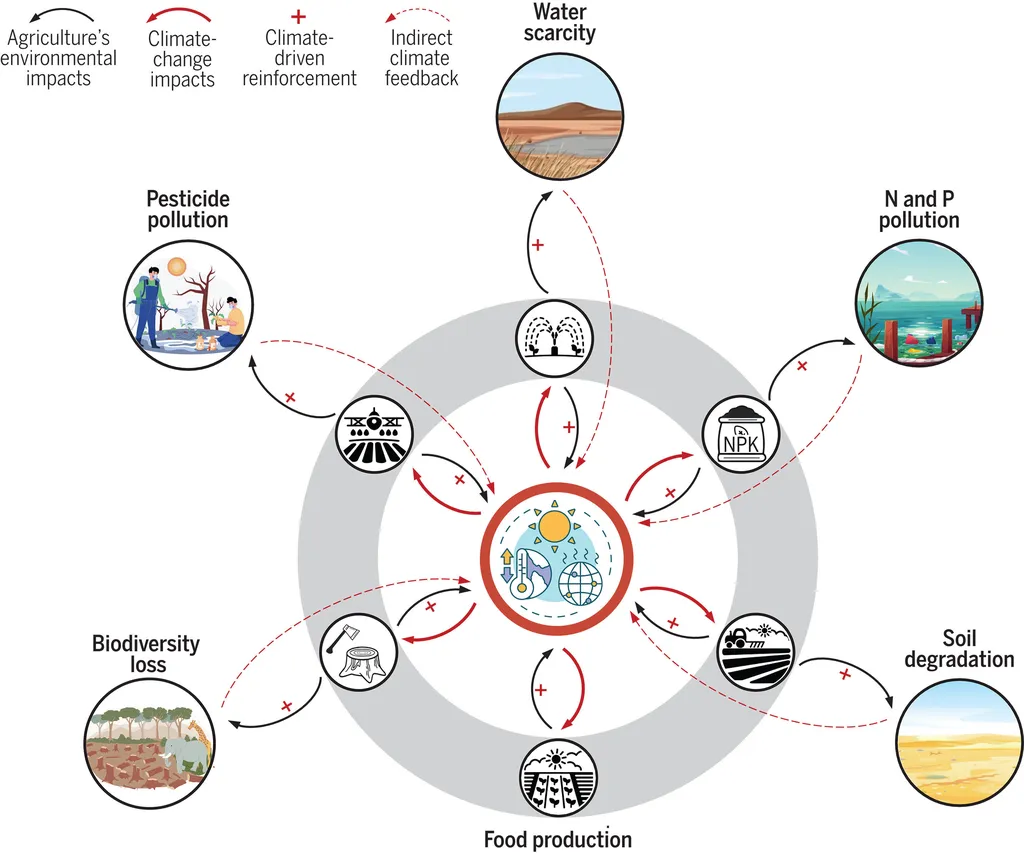In the face of climate change, agriculture stands at a crossroads. It’s both a contributor to greenhouse gas emissions and a sector deeply vulnerable to climate impacts. Transitioning to climate-resilient agriculture (CRA) is not just an environmental imperative but also a commercial necessity, and a new review published in *AgriEngineering* (translated to English as *Agricultural Engineering*) offers a roadmap for leveraging technology to meet this challenge. The research, led by Cristian-Dumitru Mălinaș from the University of Agricultural Sciences and Veterinary Medicine in Cluj-Napoca, Romania, sheds light on the distinct roles and synergistic potential of Geographic Information Systems (GIS), remote sensing (RS), and artificial intelligence (AI) in advancing CRA.
Mălinaș and his team conducted a critical analysis of existing technologies, proposing an original definition of CRA structured around three key dimensions. Their work introduces a synthesis matrix that integrates the individual contributions and synergistic potential of these technologies, offering practical decision support for researchers, practitioners, and policymakers.
“One of the key issues we identified is the frequent overlap and confusion between GIS and RS,” Mălinaș explains. “Many studies assess GIS contributions while employing RS techniques without explicitly distinguishing between the two. Our review aims to clarify these distinctions and highlight their complementarities.”
The review underscores the exponential growth of RS and AI in the past five years, while noting that GIS, despite being more established, remains underutilized and often misunderstood in agricultural applications. This gap presents a significant opportunity for the energy sector, particularly in optimizing land use and improving the efficiency of agricultural practices.
“By integrating these technologies, we can create more resilient agricultural systems that are better equipped to withstand climate impacts,” Mălinaș says. “This not only benefits the environment but also enhances productivity and profitability for farmers.”
The synthesis matrix proposed by Mălinaș and his team offers a practical tool for selecting the most appropriate technological configuration for CRA-related work. This could revolutionize how the energy sector approaches agricultural land use, potentially leading to more sustainable and efficient practices.
As the world grapples with the realities of climate change, the insights from this review could shape future developments in the field. By leveraging the distinct capabilities of GIS, RS, and AI, the agricultural sector can transition towards a more resilient and sustainable future, ultimately benefiting both the environment and the bottom line.
In an era where technology and sustainability are increasingly intertwined, this research serves as a compelling call to action for the energy sector to embrace these tools and drive meaningful change. The journey towards climate-resilient agriculture is complex, but with the right technologies and strategies, it is entirely achievable.

